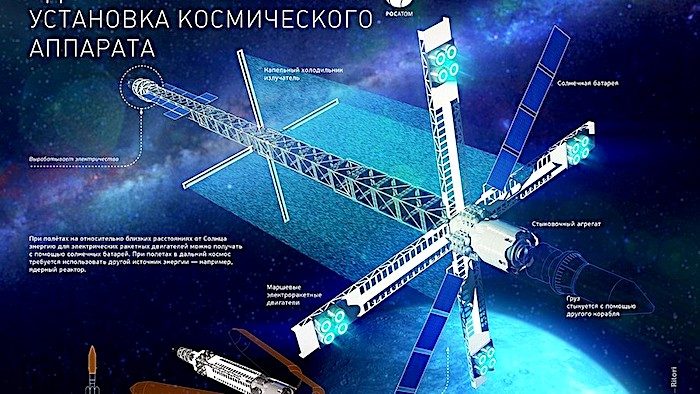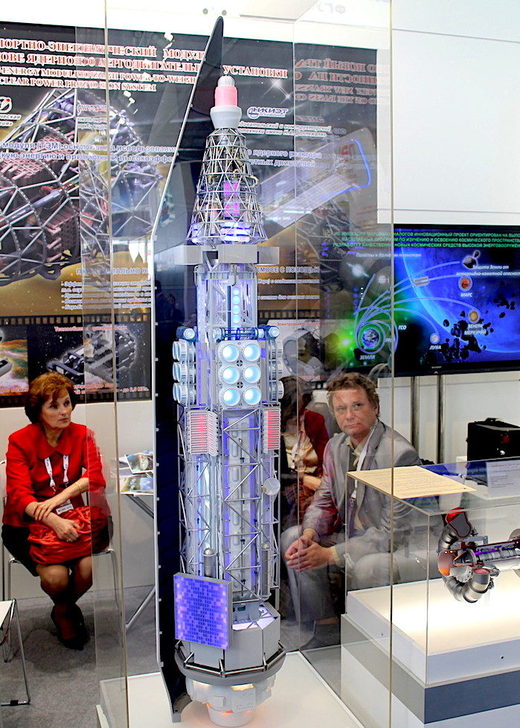
Since at least 2009, Russian space and atomic engineers have been developing a special space propulsion system, which uses a 1 megawatt nuclear fusion reactor as source of energy. According to a work competition report, published on a website tracing public spending in Russia and reviewed by the news agency, one of the crucial elements of the system, which is responsible for cooling down the reactor, has been successfully tested.
The nuclear engine, which is known by its abbreviation YaEDU (Nuclear Propulsion and Power Engine System) consists of a small fast-neutron nuclear reactor, an electricity generator fed by the reactor's heat and space thrusters powered by the generator.
Unlike chemical rocket engines, which burn through their propellant in mere minutes, the YaEDU will be able to work for tens of thousands of hours before the reactor core expires. That would allow accelerating a spacecraft to much greater speed over time. The system also acts as a reliable source of power for onboard electric systems as a side benefit. So this type of propulsion is much better than traditional rockets for long-range space missions, like exploration of Mars and beyond.
One of the engineering challenges that must be solved to create such a system is dealing with a lot of waste heat. Since the spacecraft operates in vacuum, the heat needs to be radiated into space, rather than carried away by large amounts of water, as is the case with regular nuclear power plants.
Regular radiators for spacecraft are basically long tubes mounted outside, through which the coolant flows until its temperature drops down enough. But this approach turned out to be too bulky for the YaEDU, and also vulnerable to micrometeorites - a serious threat during missions that the system is designed for.
So, instead Russian engineers created a liquid droplet radiator. This device generates a stream of droplets that collectively have a very large surface and can radiate a lot of heat into space. The droplets are then collected and pumped back into the system.
The report, cited by RIA Novosti, states that the Keldysh Research Center, a leading Russian space lab, has "created and tested prototypes of droplet generator and elements of the collector... completed testing of a prototype liquid droplet radiator."
Successful testing of other components of the YaEDU has been previously reported, including the special fuel rod assembly and ion engines. Russia plans to use the system as part of a spacecraft called TEM, or transport and energy unit.




Reader Comments